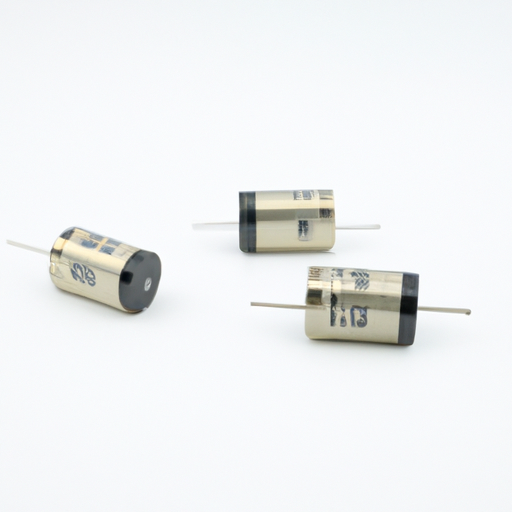Core Functional Technologies of Film Capacitors
1. Dielectric Material: Film capacitors utilize thin plastic films as the dielectric material, which can be made from various polymers such as polyester (PET), polypropylene (PP), and polycarbonate (PC). The choice of dielectric affects the capacitor's performance, including capacitance stability, temperature coefficient, and voltage rating. For instance, polypropylene is often favored for its low dielectric losses and high insulation resistance.
2. Low ESR and ESL: Film capacitors typically exhibit low equivalent series resistance (ESR) and equivalent series inductance (ESL), making them suitable for high-frequency applications. This characteristic allows for efficient energy storage and discharge, minimizing power losses. In applications like RF amplifiers, low ESR ensures minimal signal distortion.
3. High Voltage Ratings: Film capacitors can handle high voltage applications, making them ideal for power electronics, motor drives, and renewable energy systems. Their robust construction allows them to maintain performance under high-stress conditions, which is critical in applications such as electric vehicle charging stations.
4. Temperature Stability: Many film capacitors offer excellent temperature stability, which is crucial for applications that experience varying thermal conditions. This stability ensures consistent performance over a wide temperature range, making them suitable for automotive and industrial applications where temperature fluctuations are common.
5. Long Lifespan: Film capacitors are known for their longevity and reliability, often exceeding the lifespan of other capacitor types. This makes them a preferred choice in critical applications where failure is not an option, such as medical devices and aerospace systems.
6. Self-Healing Properties: Film capacitors possess self-healing capabilities, meaning that if a dielectric breakdown occurs, the capacitor can recover without permanent damage. This feature enhances reliability and reduces the risk of catastrophic failure, making them ideal for high-reliability applications.
Application Development Cases
1. Power Electronics: In power supply circuits, film capacitors are used for filtering and energy storage. Their low ESR and ESL characteristics make them ideal for smoothing out voltage fluctuations in DC-DC converters and inverters, improving overall efficiency. For example, in solar inverters, film capacitors help maintain stable output voltage despite varying input conditions.
2. Audio Equipment: High-fidelity audio applications benefit from film capacitors due to their low distortion and high-frequency response. They are often used in crossover networks and signal coupling applications, where sound quality is paramount. Audiophiles often prefer film capacitors in high-end audio equipment for their superior sound reproduction.
3. Renewable Energy Systems: Film capacitors are increasingly used in solar inverters and wind turbine applications. Their ability to handle high voltages and provide stable performance under varying environmental conditions makes them suitable for these applications. In wind turbines, they help manage power fluctuations and improve energy conversion efficiency.
4. Motor Drives: In variable frequency drives (VFDs), film capacitors are employed for DC link applications. Their high voltage rating and low losses contribute to the efficiency and reliability of motor control systems. This is particularly important in industrial automation, where precise motor control is essential.
5. Telecommunications: Film capacitors are used in RF applications, including filters and matching networks. Their low loss characteristics at high frequencies make them essential for maintaining signal integrity in communication systems. In 5G technology, film capacitors play a crucial role in ensuring high-speed data transmission.
6. Consumer Electronics: In devices such as televisions and computers, film capacitors are used for power supply decoupling and signal processing. Their compact size and reliability make them suitable for modern electronic designs. For instance, in LED TVs, film capacitors help stabilize power supply and enhance picture quality.
Conclusion
The CFR-25JB-52-1M1 film capacitor exemplifies the advanced technology and versatility of film capacitors in various applications. Their unique properties, such as low ESR, high voltage ratings, and self-healing capabilities, make them an effective choice for a wide range of electronic applications, from power electronics to consumer devices. As technology continues to evolve, film capacitors will remain a critical component in the development of efficient and reliable electronic systems, driving innovation in fields such as renewable energy, telecommunications, and high-fidelity audio.






